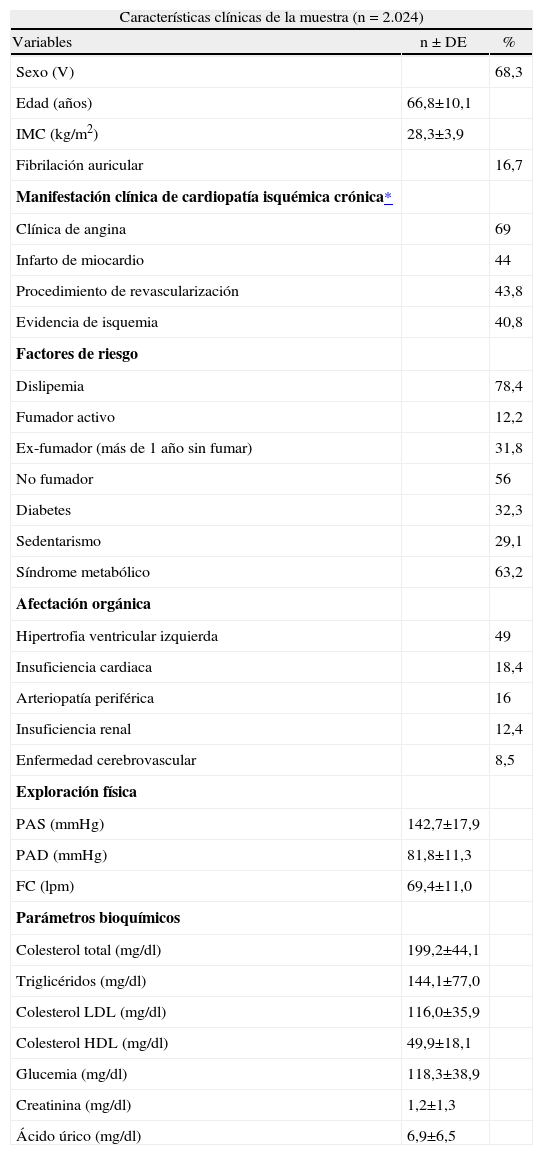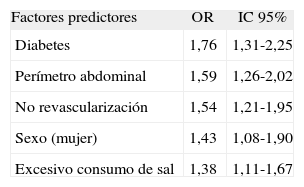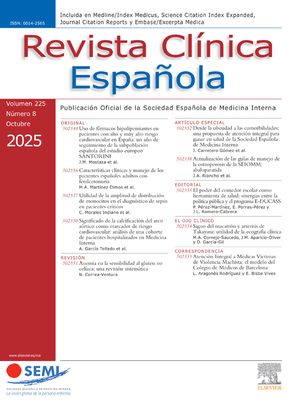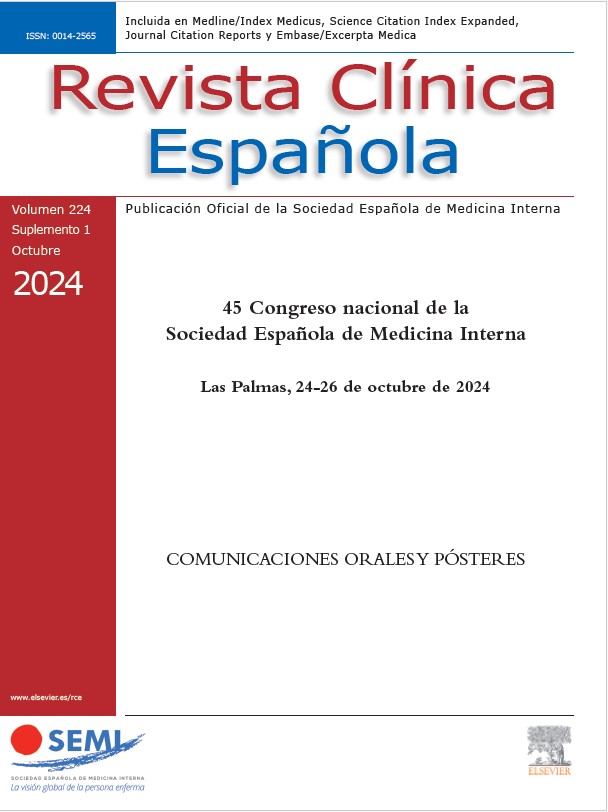CINHTIA es un estudio transversal y multicéntrico diseñado para conocer el manejo clínico de los hipertensos con cardiopatía isquémica crónica atendidos en consultas de cardiología.
Pacientes y métodosSe incluyeron pacientes ≥ 18 años, con diagnóstico de hipertensión arterial y cardiopatía isquémica crónica. Se excluyeron aquellos pacientes con un síndrome coronario agudo en los tres meses previos. Se consideró como buen control de presión arterial (PA) <140/90mmHg, <130/80 en diabéticos (ESH-ESC 2003) y buen control de colesterol LDL (c-LDL) <100mg/dl (NCEP-ATP III). Se definió como un adecuado control de diabetes una glucemia en ayunas entre 90 y 130mg/dl (ADA 2005).
ResultadosSe incluyeron un total de 2.024 pacientes (66,8 ± 10,1 años; 31,7% mujeres). La PA sistólica fue 142,7 ± 17,9 mmHg y la diastólica 81,8 ± 11,3 mmHg. El 78,4% de los pacientes tenían dislipemia y el 32,3%, diabetes. El 99,7% de los pacientes estaba tomando al menos un antihipertensivo, el más frecuente de los cuales eran los bloqueadores beta (67,1%). El 74,9% tomaba hipolipemiantes y el 27,9%, antidiabéticos. El 40,5% de los pacientes tenían la PA controlada; el 30,6% de los dislipémicos, el c-LDL controlado y el 26,6% de los diabéticos, la glucemia controlada.
ConclusionesEn esta población de tan alto riesgo, a pesar de que la mayoría de los pacientes toman varios fármacos, el control de factores de riesgo es aún insuficiente.
The CINHTIA study is a cross-sectional and multicentre survey designed to assess the clinical management of the hypertensive outpatients with chronic ischemic heart disease attended by cardiologists.
Patients and methodsPatients ≥ 18 years, with a diagnosis of hypertension and chronic ischemic heart disease, were included in the study. Patients with an acute coronary syndrome within the three months prior to the inclusion were excluded. Good blood pressure (BP) control was considered < 140/90mmHg, < 130/80mmHg for diabetics (ESH-ESC 2003). LDL cholesterol (LDL-c) < 100mg/dl (NCEP-ATP III) and fasting glucose between 90 and 130mg/dl (ADA 2005) were considered as good control rates.
ResultsA total of 2,024 patients (66.8±10.1 years; 31.7% women) were included in the study. Systolic BP was 142.7±17.9mmHg and diastolic BP 81.8±11.3mmHg. 78.4% of the patients had dyslipidemia and 32.3% diabetes. Almost all the patients (99.7%) were taking at least one antihypertensive drug, beta blockers being the most frequent (67.1%). A total of 74.9% of the patients were taking lipid lowering drugs and 27.9% antidiabetics. BP was controlled in 40.5% of the patients, LDL-c in 30.6% of the dyslipidemic subgroup and fasting glucose in 26.6% of the diabetics.
ConclusionsIn this high-risk population, the control rates of risk factors continues to remain low even though the majority of patients were taking several drugs,.
Artículo
Diríjase desde aquí a la web de la >>>FESEMI<<< e inicie sesión mediante el formulario que se encuentra en la barra superior, pulsando sobre el candado.

Una vez autentificado, en la misma web de FESEMI, en el menú superior, elija la opción deseada.

>>>FESEMI<<<










